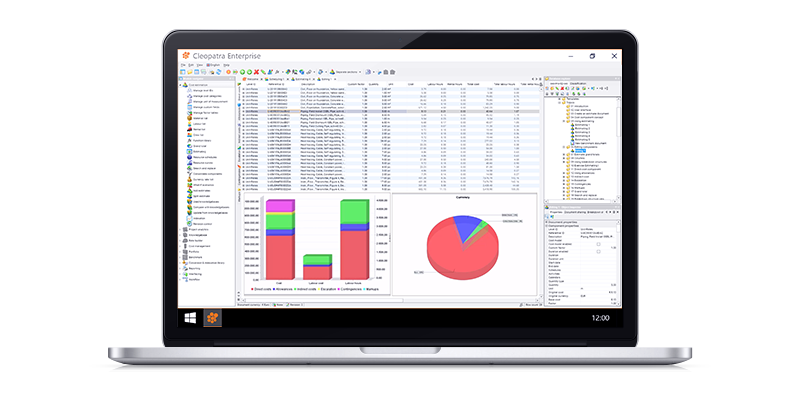Recent developments in the global economy show that many companies in the process industry are keen to reduce both operational and capital expenditures and improve their overall turnaround efficiency. This clearly addresses a need to examine the estimation of costs and scheduled time for turnarounds, and the efficiency of planning and execution of them.
*Better management of shutdowns and turnarounds can yield schedule and cost improvements of up to 30%
The purpose of putting together a cost estimate or a budget is to ensure that the estimated cost of the turnaround project is known as far in advance as possible. This allows those responsible (mainly the steering group) enough time to optimize the constraints on the budget – by pricing each major element of the turnaround and holding costs to a minimum.
Factors affecting the accuracy of Turnaround Cost Estimates
A cost estimate needs to be accurate to provide management with the right information needed for decision making, to allow cash flow planning and to aid in firm control of expenditure. This accuracy of estimates depends upon exercising several disciplines, namely:
1) Achieving a work definition of the highest possible quality:
Realistically, not all work can be specified. There are unknowns (for more detail see Definition 1) because the items to be worked upon are mainly concealed from the view when the plant is running (which is usually the time when planning is carried out). The plan is sometimes reduced to guesswork based on previous experience, which is not always sufficient.
2) Closing the work list on the specified date:
This usually happens 4-6 months before the start, for a major turnaround. The line must be drawn somewhere to allow the estimate to be made. If the influx of work requests is never-ending, a budget cannot be fixed.
3) Separate costing of all work requested after the worklist closure date:
Reasonably, work requests will continue to arrive after the closure date, due to the fallibility of people and equipment. A separate ‘late work order system’ should handle this. The work is planned first on the approved list and it should be costed separately on a late order budget sheet.
4) Allocation of a unique cost code to the turnaround:
Without a unique cost code, it will be impossible to track down the shutdown’s costs, and you won’t be able to reuse this data later on.
5) Turnaround manager approval of every item of expenditure:
For every item of expenditure, you’ll need the approval of the turnaround manager. Any number of people may otherwise allocate cost to the turnaround and you would lose the control over expenditure.
Recommended immediate actions for turnaround cost estimation
To have a more efficient and predictable cost estimation, along with the accuracy items listed above, you’ll need a series of actions that can be implemented during turnarounds. Check out the following:
1) Define turnaround scope and estimate basis:
There should be wide agreement on scope and estimate basis to define different classes of cost estimation, such as 50%, 30% or 10% accurate estimate.
2) Standardize Work Breakdown Structure:
It is always good to move towards a common standard layout for cost estimates, to have a better understanding among the teams.
3) Track the uncertainty allowance:
If the turnaround community is ever to develop even rudimentary rules of thumb for estimating emerging work, discovery work and contingency for the unforeseen, you need to begin to track expenditure in these areas.
4) Tie the estimates to the stage gates (or phase-gate)
Tying the estimate and stage-gate (See Definition 2) together could improve the review of turnaround planning and preparation progress. The stage-gate approval system, allows to improve cost estimate accuracy and it makes some suggestions for the next steps in developing better turnaround cost estimates.
*Definition 1:
In a turnaround, the “known unknowns” are:
1) Emerging work – Work to repair items that have broken/failed between the completion of the estimate and the start of the turnaround.
2) Discovery work – Repair work that is discovered during the turnaround, when equipment or pipework is opened up for detailed inspection.
*Definition 2:
In the capital project world, it is now generally accepted that front-end definition is the key to a successful project. In order to achieve good front-end definition, capital project teams have largely moved toward a stage gated approach, whereby the design proceeds through three distinct stages of ever-improving scope.
Key points are:
• The length of each stage is a function of the work required to be completed in that stage.
• The culmination of each stage is a cost estimate, with the estimates getting more accurate with each succeeding stage. Generally speaking, the feasibility stage of a project results in a ±50% accuracy estimate, the following conceptual design stage results in a ±30% estimate, and the final basic design stage results in a ±10% estimate. Hence, the focus of the stage is in developing a scope basis to meet the estimate basis requirements for the level of accuracy intended.
• The project cannot proceed to the next stage without first going through a stage gate review to check whether it has achieved the required scope and estimate basis.
• Full funding of the project is usually only received at the end of the third, basic design phase.
References
Cost estimating for turnarounds, Petroleum Technology Quarterly
The upside of downtime, Mckinsey
Turnaround shutdown and outage management, Tom Lenahan
Turnaround Estimating & Budgeting
Cleopatra Enterprise Software





